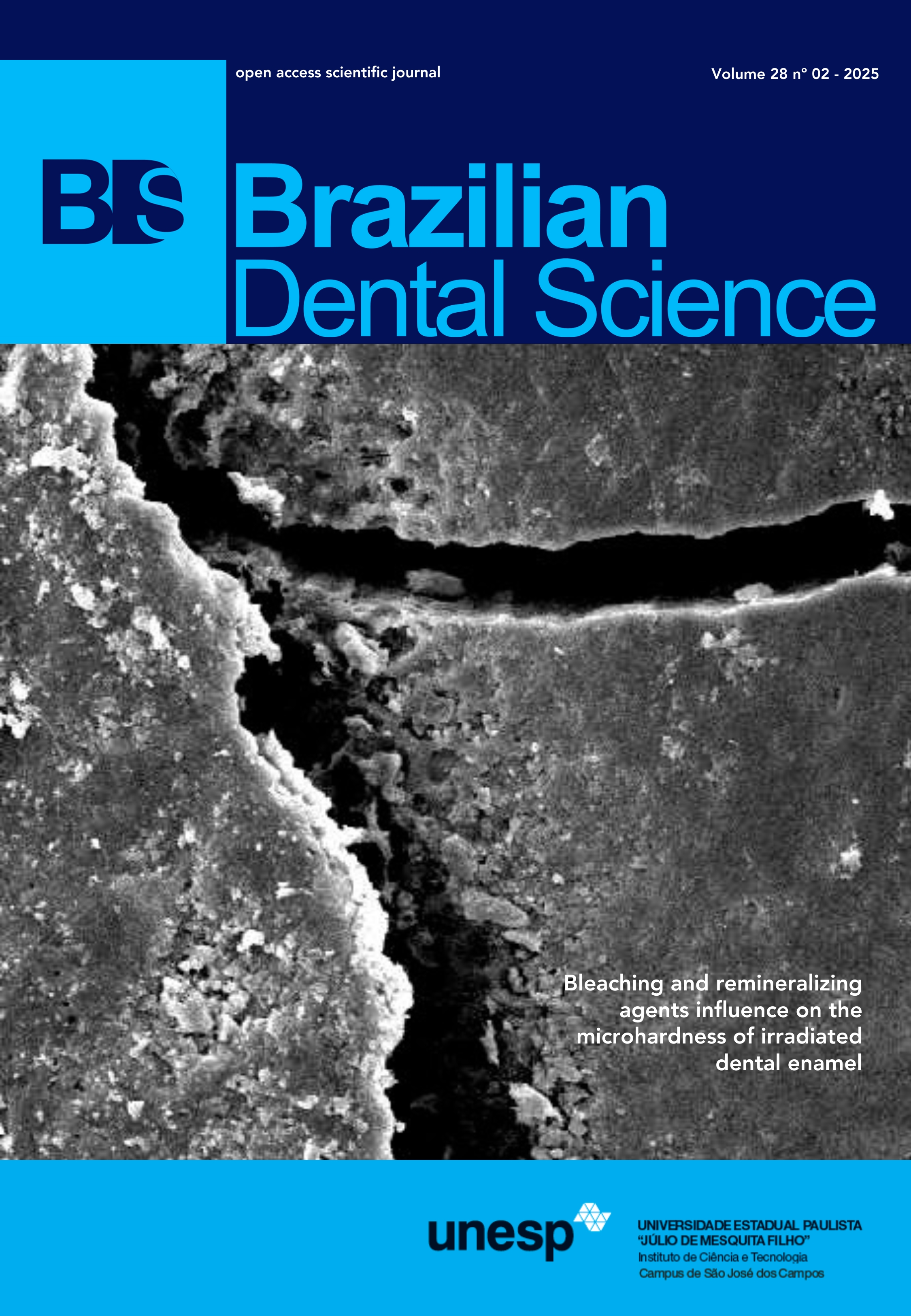Multi-peak light sources can improve the physical and mechanical properties of a zirconia- and diatomite-based dental resin: an in vitro study
DOI:
https://doi.org/10.4322/bds.2025.e4750Abstract
Objective: This study aimed to evaluate the physicomechanical properties of three resin composites—Zirconfill (Maquira), Applic (Maquira), and Opallis (FGM)—photoactivated with single-peak (Demi Plus; Kerr) and multipeak (Valo Cordless Grand; Ultradent; Bluephase N G4; Ivoclar Vivadent) light-curing units. The resins differed in filler composition: Applic contains micronized barium-alumino-silicate glass and nanometric silica; Opallis includes silanized barium-alumino-silicate glass and silicon dioxide nanoparticles; and Zirconfill incorporates diatomite, silica, and zirconium mixed oxide. Material and Methods: A total of 270 specimens were prepared to evaluate the degree of conversion (DC), flexural strength (FS), elastic modulus (ME), water sorption (SOR), and solubility (SOL). Morphological and compositional characterization was performed using scanning electron microscopy (SEM) and energy-dispersive spectroscopy (EDS). Data were analyzed using two-way ANOVA followed by Tukey’s post hoc test (5%), after verification of normality (Shapiro-Wilk test). Results: Zirconfill, when photoactivated with the Bluephase unit, exhibited the highest FS and ME values and the lowest SOR and SOL rates, highlighting the potential of innovative fillers to enhance restoration durability. Although Opallis showed high DC values across all groups, its mechanical properties were inferior. Conclusion: It can be concluded that the resin composition and the selection of a light-curing unit with a spectrum and power compatible with the composite’s photoinitiator system are essential to optimize the clinical performance and longevity of resin-based restorations.
KEYWORDS
Composite resins; Curing lights dental; Dental materials; Flexural strength; FTIR.
Downloads
Published
How to Cite
Issue
Section
License
Copyright (c) 2025 Brazilian Dental Science

This work is licensed under a Creative Commons Attribution 4.0 International License.
Brazilian Dental Science uses the Creative Commons (CC-BY 4.0) license, thus preserving the integrity of articles in an open access environment. The journal allows the author to retain publishing rights without restrictions.
=================




























